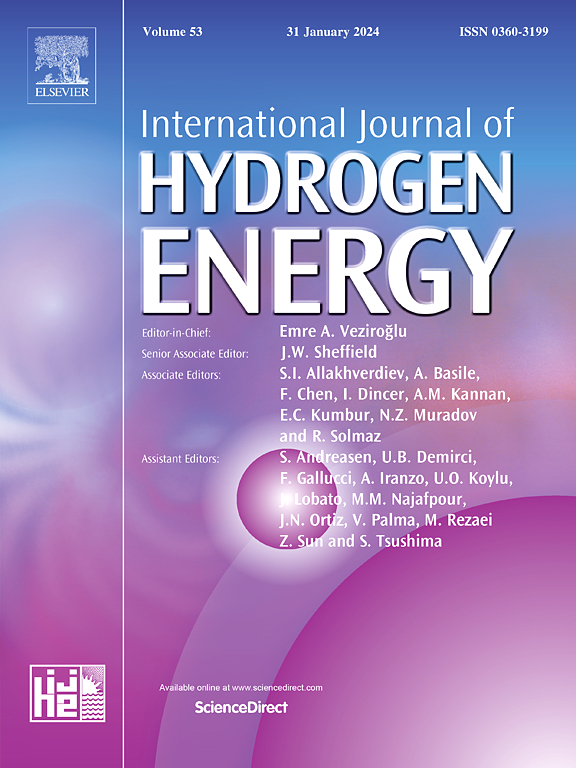4E analysis of an integrated system of catalytic distillation dehydrogenation system of perhydro benzyltoluene and solid oxide fuel cell
IF 8.1
2区 工程技术
Q1 CHEMISTRY, PHYSICAL
引用次数: 0
Abstract
This study proposes integrating the catalytic distillation dehydrogenation system with a solid oxide fuel cell (SOFC) system to recover and reuse the waste heat from the SOFC exhaust gases. The research focuses on a 25 kW SOFC system and categorizes potential system layouts into three types based on the final use of the exhaust gas. Through a comprehensive analysis from energy, environmental, economic and exergy (4E) perspectives, the results show that while the SOFC stack dominates the energy and economic factors, leading to consistent performance across similar system layouts, the thermodynamic irreversibility during system operation is influenced by exergy destruction and exergy loss. Using a multi-criteria evaluation approach, the optimal integration scheme, where the final exhaust gas is utilized for preheating air, was identified when all four indicators were equally weighted. The results indicate that the optimal system achieves a thermal efficiency of 46.97% and improves system energy efficiency by 52.59%. Furthermore, compared to the initial non-integrated system, the integrated system reduces environmental carbon emissions by 58.56%, increases economic efficiency by 36.64% and reduces exergy losses by 94.11%, highlighting the advantages of system integration. More importantly, the integrated system has a competitive levelized cost of electricity (LCOE) of 0.134 $/kWh, demonstrating its potential for a wide range of applications, from small-scale to large industrial processes.

求助全文
约1分钟内获得全文
求助全文
来源期刊

International Journal of Hydrogen Energy
工程技术-环境科学
CiteScore
13.50
自引率
25.00%
发文量
3502
审稿时长
60 days
期刊介绍:
The objective of the International Journal of Hydrogen Energy is to facilitate the exchange of new ideas, technological advancements, and research findings in the field of Hydrogen Energy among scientists and engineers worldwide. This journal showcases original research, both analytical and experimental, covering various aspects of Hydrogen Energy. These include production, storage, transmission, utilization, enabling technologies, environmental impact, economic considerations, and global perspectives on hydrogen and its carriers such as NH3, CH4, alcohols, etc.
The utilization aspect encompasses various methods such as thermochemical (combustion), photochemical, electrochemical (fuel cells), and nuclear conversion of hydrogen, hydrogen isotopes, and hydrogen carriers into thermal, mechanical, and electrical energies. The applications of these energies can be found in transportation (including aerospace), industrial, commercial, and residential sectors.
 求助内容:
求助内容: 应助结果提醒方式:
应助结果提醒方式:


